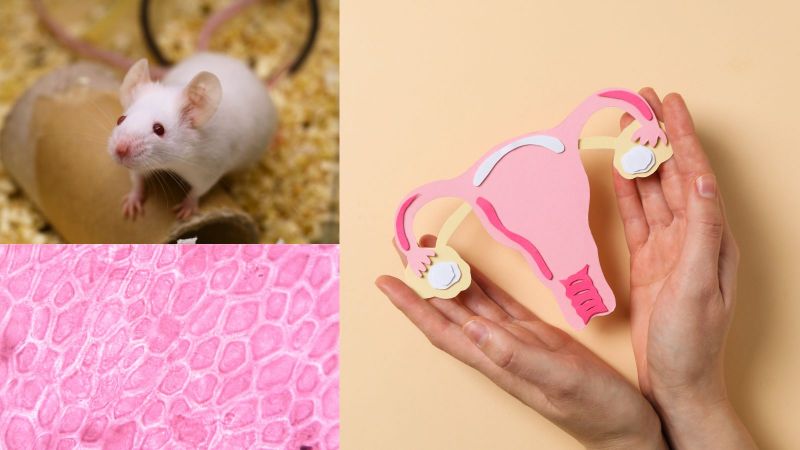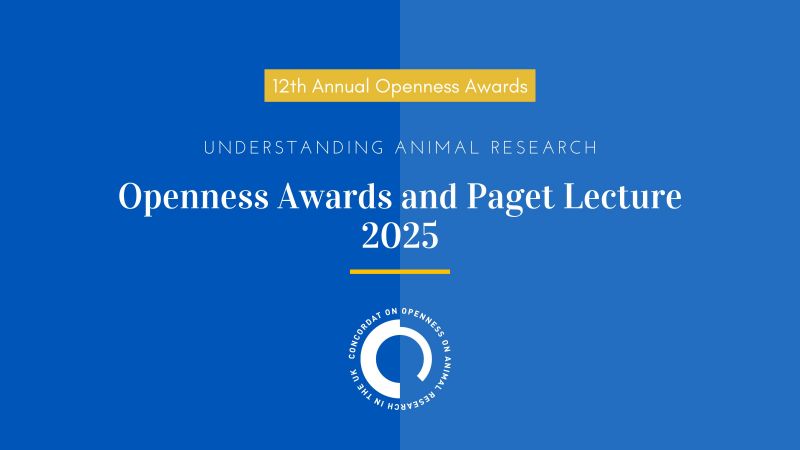beagle.wiki
Dogs in a playroom at MBR Acres, Wyton.
MBR Acres
MBR Acres doesn’t carry out animal research, although it is licensed to undertake specific procedures like taking blood to make in vitro tests.
This page gives the facts about how and why dogs are used in science and explains some common misunderstandings.
Jump to:
Why are there special breeders for laboratory dogs?
What experiments are dogs used in and why?
Why might dogs be killed in regulatory research?
Do dogs suffer in the laboratory?
Are dogs used to supply blood?
Are there alternatives to dogs?
Are activist claims or images real?
Why are there special breeders for laboratory dogs?
There are thousands of pet dog breeders in the UK, most operating without a licence, and hundreds of thousands of dogs are imported illegally as part of the pet trade1, but none of these animals can be used in research. In 1986, animal rights and welfare organisations lobbied MPs for all animals used in research to come from dedicated breeders which could be regulated and inspected2.
Specialised breeders already existed before it became a legal requirement to source research animals from them, because there was a demand from scientists for healthy, well-raised animals that are unfazed by the lab environment and are free of genetic defects that harm animal health3. Many more pet dogs are euthanised each year as unwanted or illegal4 than are used in research, but these dogs would be unsuitable for research because they would likely be unhappy in an unfamiliar lab environment and have a poorly-understood health history.
The enhanced standards for breeding research animals are contained in a Code of Practice: https://assets.publishing.service.gov.uk/government/uploads/system/uploads/attachment_data/file/388535/CoPanimalsWeb.pdf
What experiments are dogs used in and why?
The vast majority of research has always used non-animal methods, but in cases where the information they give is too limited, animal use may be the only practical way to tackle a problem.
Summaries of all experiments involving animals are published each year on the government’s website so it is easy to see why animals need to be used in each case.

The summary above from this collection describes how new medicines were tested for pet dogs earlier this year.
Around three quarters of dogs bred for research are used in regulatory testing5, and a quarter are used in fundamental or translational research.
Regulatory testing
“Regulatory testing” is required by law and means safety testing of things that might harm humans, animals or the environment. Likewise, “toxicity” tests are usually for proving a lack of toxicity6. Most regulatory testing became law because a lack of testing had led to real-world harms to people or animals.
There are many regulations that require safety tests. These include regulations that cover human and animal medicines, feedstuffs and medical devices.
Most safety regulations are international, set by organisations like the ICH7, ISO8 and OECD9. All of these operate a cascade system that starts with non-animal testing methods, then uses animals if non-animal approaches fall short.

International standards, such as this ISO protocol for testing contact lenses, start with non-animal methods.
Activists will often highlight the use of a gavage, or feeding tube, to test pesticides. This is a reference to OECD protocol 409, which states "The test compound is administered in the diet or in the drinking water, by gavage or in capsules." It will obviously be easier in most cases for one person to give a dog a gel capsule than for two people to perfom a gavage. It goes on to say "A limit test may be performed if no effects would be expected at a dose of 1000 mg/kg bw/d." The purpose of the test is to prove there has been no harmful effect on the body's tissues.
The necessity of using dogs in pesticide testing is a matter of current discussions. In some cases, regulatory decisions have been possible without using the dog data, yet in others it's remained necessary. A drawback of most non-animal in vitro tests is they tend to be very good at predicting toxicity to a single organ, but remain weak at whole system and/or multi-organ effects, especially in situaitons such as where the trivial disruption of one organ seriously affects the others. The risks also aren't entirely to human life since pets live alongside us and can be exposed inside and outside the home, in food, drink and air. Pesticides also aren't simply on the surface of fruit and veg, but penetrate into the food itself.
Introducing non-animal methods to regulations
Changes to the specifications of regulatory safety tests, such as introducing non-animal methods as they are developed, are made internationally through regular reviews of available new methods. A country could unilaterally ban animal tests, but that would not prevent regulatory tests being applied to medical products that are imported and would prevent the sale of medical products to any other developed country. In contrast to an isolationist approach the UK has been able to lead international change, for instance removing animal tests where death was the intended outcome in 2009.
Cosmetics, tobacco and bleach
Some things are never tested on animals in the UK, such as bleach or other household cleaners, tobacco or cosmetics. However, a principled lack of testing is thought to have led to unintended consequences such as coral reefs being bleached by cosmetic ingredients10.
Likewise, UV blockers found in products like lipstick and sunscreen have been suspected of causing cancers, infertility and impacting the growth of unborn babies in ways that did not show up in non-animal tests.
Proving a compound is safe, not proving it kills
Dogs are not usually killed by the substance they are being used to test. The hope is usually that something won’t harm the dog, like gaining a “safe for pets” designation. Medicines are tested by giving a small amount of a new drug to a dog daily for many weeks during which it will be carefully monitored.
How accurate are dogs for predicting the safety of human medicines?
Tests in dogs are used for human medicines because they predict first-in-man safety very well. They are not intended to predict what happens in later human-testing stages. A great many effects that do not appear in non-animal in vitro tests (which are done before or alongside animal tests) become detectable when substances are tested in dogs. Something that’s toxic in organoids or cell cultures doesn’t always translate to whole-body systems, which are able to compensate through homeostatic processes.
|
Bayesian modelling, NPV safety prediction |
||
|
Organ category |
Dog to human |
Mouse to human |
|
Pulmonary |
96% |
95% |
|
Biochemical |
95% |
93% |
|
Renal |
95% |
96% |
|
Ophthalmology |
94% |
96% |
|
Haematology |
93% |
92% |
|
Cutaneous |
91% |
82% |
|
Musculoskeletal |
91% |
92% |
|
Cardiovascular |
91% |
75% |
|
Nervous system |
90% |
93% |
|
Liver |
88% |
89% |
|
Gastrointestinal |
76% |
69% |
Figure 1: IQ Consortium translational database
Fundamental (basic) research
Fundamental (aka basic) research, for which around 600 dogs are used each year, investigates how biological systems work. This information can then be used to prevent disease, treat it or suggest avenues for further research.
Many of the dogs used in fundamental research are humanely killed to supply body tissues for in vitro tests and won’t experience any other kind of procedure.
Why might dogs be killed in regulatory testing?
Dogs are not usually killed by the substance they are used to test. They may, however, be put down by injection, the same as is used at the vets, in order to study their organs and tissues post-mortem. This is to assess things such as how a drug travelled around the body and to look for early signs of disease that aren’t outwardly detectable. Scientists search for these early tell-tale markers of disease rather than waiting to see if an animal becomes sick.
Do dogs suffer in the laboratory?
Most dogs will be put down under anaesthetic at the end of a study. Dogs may suffer pain, alarm or discomfort while alive but to very different degrees, and usually at a level not higher than the discomfort of a typical visit to the vet for a domestic pet. Around three quarters of dogs will experience mild procedures such as having blood taken. Around a quarter will experience moderate procedures, such as surgery under general anaesthetic and recovery, or a modified diet. Of 3,544 medical procedures on dogs in 2023, 4 were rated as severe in terms of pain, suffering or distress and 11 were “non-recovery” which means it all happened under general anaesthetic and the dog did not recover consciousness after the procedure.

Data from the latest Home Office Annual Statistics collection for 2023, tabs 3 onwards of the data tables (link opens an .ods file)
Are dogs used to supply blood products?
An average of 50 dogs per year will be used to supply blood. This is used for several purposes including fundamental research, calibrating assays, transfusions for pets, researching dog diseases and formulating pet medicines. There is a chronic shortage of human blood for research and the UK’s 9 million pet dogs drive demand for veterinary tests and products. Some of this demand can be met through the voluntary donation of blood at dog blood banks, but this supply is limited and blood products often do not last long outside of a living body (1-2 days). Two types of bleeding can be allowed, one where dogs give small amounts of blood and another where the dogs are placed under terminal general anaesthesia and all of their blood is collected. Large amounts of blood taken from an individual dog prevents the need for many small collections involving lots of dogs.
Are there alternatives to dogs?
Alternatives are not yet at the point where they can be safely used. However huge improvements have been made in recent years to both Non-Animal Technologies (NATS) and New Approach Methodologies (NAMs), which are the NATs concerned with answering regulatory questions. The extent to which methods avoiding live animal use can be used as of 2025 is patchy - very often a non-animal method can answer only part of a multi-faceted question. Hence, the focus of much current alternatives investment is filling in the gaps.
The UK has a NAMs roadmap first introduced in 2015 that sketches out how to support the development, validation and uptake of NAMs, and many departments and agencies have their own sub-map like this one for the Food Standards Agency.
The “virtual dog”
One of the most promising avenues for removing dogs from regulatory testing in the short term is to use computers to analyse old dog data and to use that to predict the performance of similar new similar substances. The UK is leading this work with the NC3Rs “virtual dog”’, which is aiming to be ready in four years’ time11
Organ on a chip
Technologies such as organs-on-a-chip can give an early warning that some potential drugs are unsafe or impractical at an early stage in the development process. This avoids animal tests, but also human tests, in vitro tests and wasted expense by being able to spot (in the best cases) 9 out of every 100 drugs that would ultimately fail.
No regulatory change is needed for drug developers to use non-animal methods during preclinical development and they are already very widely used across the biosciences.
Developing non-animal technologies in the UK
The UK is home to the world’s leading centre for developing alternatives12 , the National Centre for the 3Rs (NC3Rs), which funds far more research than animal replacement charities. However, organisations that undertake live animal tests also play a major role in developing non-animal alternatives. Contract research organisations such as Labcorp work with NAMs developers13 such as organ-chip developer Emulate14 to make their devices usable. Likewise, Charles River Laboratories, which has developed and patented several animal replacements over the years, has announced $500million to supercharge its alternatives output in coming years15. Just this one company’s spending in the next five years will be equivalent to 960 years of the Lush prize, 670 years of grants from Animal Free Research UK and 200 years’ of the PETA science consortium.
There is no shortage of funding, focus and effort in this area from the very people who undertake the experiments – there are just a series of difficult technical challenges to overcome before non-animal methods can replace dogs without greater suffering being caused to humans, animals or the environment.

Are activist claims or images real?
Activist claims are often exaggerated, missing vital details or make inferences that aren't there. Many claim, for instance, that the high failure rate of preclinical research, often said to be 90% based on a series of misconceptions, is due to animal use, when there are several much larger reasons for failure. That 90% failure rate is itself not accurate, with large variability between preclinical to clinical translation depending on the target system. One metastudy, for instance, found the following translation rate.
| Therapeutic Area | Success Rate (%) |
|---|---|
| Disorders of Lipoprotein Metabolism | 86.0 |
| Epilepsy | 85.0 |
| Infectious Diseases | 33.0 |
| Ophthalmology | 33.0 |
| Cancer | 3.0 |
| Schizophrenia | 45.4 |
| Pancreatic Cancer | 46.0 |
The 'failure' rate is thus often a reflection of the complexity and aggressiveness of the disease being treated.
Activist images also tend to be missing vital context and may otherwise be old, from other countries with different animal welfare standards or otherwise misleading. This example is of a cat rescue rebadged as animal testing.
A recent example is an image and video of dogs apparently wearing gas masks.

This is not animal testing, an inhalation test nor 'training' the dogs to wear a mask. It is a screening test for removing dogs from inhalation studies, performed incorrectly, from the US not the UK.
Like people, animals all have different personalities. Some hate wearing a mask and others are so relaxed about it they fall asleep during the procedure. Only the relaxed ones are put forward for inhalation studies and this test is supposed to be a quick trial to find out which is which. The former employee who took this video, instead of stopping the test when some of the dogs show distress, allowed it to continue while filming it then sent it to activists who advocate for the non-existence of research animals.
Are these tests to inhale pesticides?
Although not illegal, these are thought to be relatively rare. One study by agrochemical company Syngenta and the Humane Society estimates that of nearly 200 new pesticides introduced in the 23 years between 1998 and 2021, only around 40 studies using dogs were undertaken to satisfy safety regulations. It would be unusual to repeat such a study - normally the same data would be submitted to several regulators in different parts of the world. Activists may be misinterpreting the records of tests undertaken to prove products are safe for pets, which involve spraying some in a corner of a room and letting the animal investigate the space. The confusion may also be linked to service licenses, where researchers submit a long list of methods and potential species that might need to be used to satisfy government safety testing requirements. This does not mean that such an experiment was actually undertaken.
Inhalation studies are more normally used to develop new preventions and treatments for:
- Human conditions like asthma and cystic fibrosis;
- Animal-only diseases affecting dogs like canine infectious respiratory disease complex (CIRD-C) and Bordetella; and
- Shared diseases like pneumonia.
Most medical and veterinary research techniques (70%-80%) use non-animal in vitro techniques, but there are various drawbacks to the non-animal assays in this case including:
- They lack the full complexity of real lung tissue, and can miss important cellular components like immune cells, neural cells, lung fibroblasts and pulmonary macrophages;
- It's challenging to create fully functional endothelial-lined capillaries with diameters smaller than 10µm (micrometers), which are everywhere in real lungs;
- The lifespan of cells in these systems rarely exceeds two weeks, so long-term studies can’t be undertaken.
For these reasons, animals may be the only appropriate model and, of all the animal species, dogs can be the best candidates, if they don’t mind the mask.
Resources
Every experiment is published in batches on the Home Office website every 3 months:
Non-technical summaries granted in 2024 - GOV.UK (www.gov.uk)
Number of animals used, by species and purpose, and whether suffering occurred:
Regulations for veterinary medicines:
https://www.gov.uk/guidance/veterinary-medicines-regulations#uk-legislation
Regulations for human medicines:
https://www.legislation.gov.uk/uksi/2012/1916/contents
Section 50 references, Part 3 of annex one has the relevant protocols.
The legal bases of different types of medicine application are listed here:
https://www.gov.uk/guidance/types-of-application-legal-basis
References
1. https://www.thekennelclub.org.uk/media/4185/collaboration-is-key-report-england.pdf
4. https://you.38degrees.org.uk/petitions/prevent-unnecessary-euthanasia-of-abandoned-animald
6. https://www.ncbi.nlm.nih.gov/pmc/articles/PMC10087031/
7. https://www.ich.org/page/members-observers
8. https://www.iso.org/home.html
9. https://www.oecd.org/chemicalsafety/
10. Miller, I.B., Pawlowski, S., Kellermann, M.Y. et al. Toxic effects of UV filters from sunscreens on coral reefs revisited: regulatory aspects for “reef safe” products. Environ Sci Eur 33, 74 (2021)
https://enveurope.springeropen.com/articles/10.1186/s12302-021-00515-w
11. https://nc3rs.org.uk/crackit/virtual-second-species
13. https://www.labcorp.com/venture-fund/portfolio
14. https://emulatebio.com/press/emulate-announces-strategic-collaboration-with-covance/
15. https://www.criver.com/eureka/charles-river-launches-alternative-model-project




